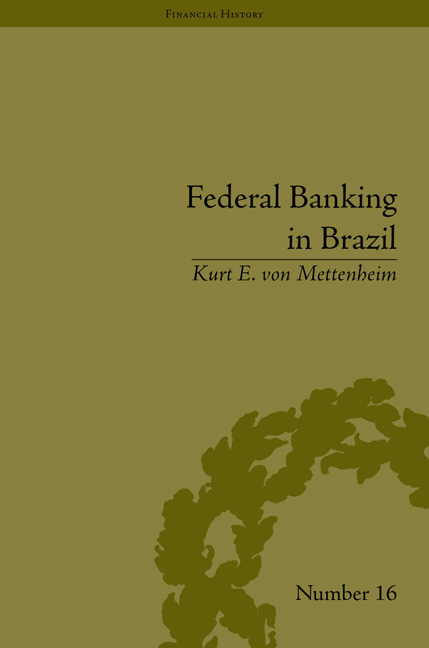Book contents
- Frontmatter
- CONTENTS
- Acknowledgements
- List of Figures and Tables
- Introduction
- 1 Government Banking Theory
- 2 Bank Change in Brazil
- 3 The Banco do Brasil – with Maria Antonieta del Tedesco Lins
- 4 The Caixa Economica Federal (Federal Savings Bank)
- 5 The Banco Nacional de Desenvolvimento Econômico e Social (National Bank for Economic and Social Development, BNDES)
- Conclusion
- Notes
- Works Cited
- Index
3 - The Banco do Brasil – with Maria Antonieta del Tedesco Lins
- Frontmatter
- CONTENTS
- Acknowledgements
- List of Figures and Tables
- Introduction
- 1 Government Banking Theory
- 2 Bank Change in Brazil
- 3 The Banco do Brasil – with Maria Antonieta del Tedesco Lins
- 4 The Caixa Economica Federal (Federal Savings Bank)
- 5 The Banco Nacional de Desenvolvimento Econômico e Social (National Bank for Economic and Social Development, BNDES)
- Conclusion
- Notes
- Works Cited
- Index
Summary
‘… [the] Banco do Brasil had, in practice, the power to finance its credit operations via money expansion, turning it into the most powerful public institution in Brazil. Its president had similar prestige as the Finance Minister and normally reported directly to the President.’
M. Nóbrega and G. Loyola, ‘The Long and Simultaneous Construction of Fiscal and Monetary Institutions’ (2006), p. 80The Banco do Brasil was founded before Brazil. Since 1808, government (and national) banks with this name have dominated banking, money management and economic policy. Until creation of the Central Bank in 1965, the Banco do Brasil supervised banks, managed the money supply, promoted exports, controlled imports, provided lending of last resort to banks, brokers and private firms and managed foreign exchange operations and national reserves. Until reforms in the 1980s, the Banco do Brasil remained executor of federal government budgets and retained free access to funds at Treasury to settle accounts. The modernization of Brazilian government and the development of specialized agencies for banking, money and finance policy is a story of extricating prerogatives from the Banco do Brasil. The gradual transfer of monetary policy to SUMOC (1945), central banking to the Central Bank (1965) and fiscal management to Treasury (1986) and Senate as determined by the 1988 Constitution has produced fundamental change at the bank. Since opening the industry in the 1990s, policymakers and Banco do Brasil executives have adopted market oriented policies and corporate governance reforms inspired by private banking to meet competition.
- Type
- Chapter
- Information
- Federal Banking in BrazilPolicies and Competitive Advantages, pp. 59 - 100Publisher: Pickering & ChattoFirst published in: 2014

